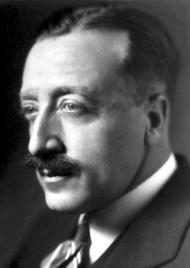Quebec, also Québec, Quebec City or Québec City, is the capital of the Canadian province of Quebec. As of 2011, the city has a population of 516,622, and the metropolitan area has a population of 765,706, making it the second most populous city in Quebec after Montreal, which is about 233 km (145 mi) to the southwest.
The narrowing of the Saint Lawrence River proximate to the city's promontory, Cap-Diamant (Cape Diamond), and Lévis, on the opposite bank, provided the name given to the city, Kébec, an Algonquin word meaning "where the river narrows". Founded in 1608 by Samuel de Champlain, Quebec City is one of the oldest cities in North America. The ramparts surrounding Old Quebec (Vieux-Québec) are the only remaining fortified city walls that still exist in the Americas north of Mexico, and were declared a World Heritage Site by UNESCO in 1985 as the 'Historic District of Old Québec'.
According to the federal and provincial governments, Québec is the city's official name in both French and English, although Quebec City (or its French equivalent, Ville de Québec) is commonly used, particularly to distinguish the city from the province. The city's most famous landmark is the Château Frontenac, a hotel which dominates the skyline. The National Assembly of Quebec (provincial legislature), the Musée national des beaux-arts du Québec (National Museum of Fine Arts of Quebec), and the Musée de la civilisation (Museum of Civilization) are found within or near Vieux-Québec.
Early history
Quebec City is one of the oldest European settlements in North America. While many of the major cities in Mexico date from the sixteenth century, among cities in Canada and the U.S.A., few were created earlier than Quebec City (St. John's, Placentia (Plaisance, the capital of French North America from 1655-1713), Harbour Grace, Port Royal, St. Augustine, Santa Fe, Jamestown, and Tadoussac). Also, Quebec's Old Town (Vieux-Québec) is the only North American fortified city north of Mexico whose walls still exist.
French explorer Jacques Cartier built a fort at the site in 1535, where he stayed for the winter before going back to France in spring 1536. He came back in 1541 with the goal of building a permanent settlement. This first settlement was abandoned less than one year after its foundation, in the summer 1542, due in large part to the hostility of the natives combined with the harsh living conditions during winter.
Quebec was founded by Samuel de Champlain, a French explorer and diplomat on July 3, 1608, and at the site of a long abandoned St. Lawrence Iroquoian settlement called Stadacona. Champlain, also called "The Father of New France", served as its administrator for the rest of his life.
The name "Canada" refers to this settlement. Although called the cradle of the Francophone population in North America, the Acadian settlement at Port-Royal was established three years earlier. The place seemed favourable to the establishment of a permanent colony.
In 1665, there were 550 people in 70 houses living in the city. One-quarter of the people were members of religious orders: secular priests, Jesuits, Ursulines nuns and the order running the local hospital, Hotel-Dieu.
Quebec city was the headquarters of many raids against New England during the four French and Indian Wars. In the last war, the French and Indian War (Seven Years War), Quebec City was captured by the British in 1759 and held until the end of the war in 1763. It was the site of three battles during Seven Years War - the Battle of Beauport, a French victory (July 31, 1759); the Battle of the Plains of Abraham, in which British troops under General James Wolfe defeated the French General Louis-Joseph de Montcalm on September 13, 1759 and shortly thereafter took the city; and the final Battle of Sainte-Foy, a French victory (April 28, 1760). France ceded New France, including the city, to Britain in 1763.
At the end of French rule in 1763, forests, villages, fields and pastures surrounded the town of 8,000 inhabitants. The town distinguished itself by its monumental architecture, fortifications, affluent homes of masonry and shacks in the suburbs St-Jean and St-Roch. Despite its urbanity and its status as capital, Quebec City remained a small colonial city with close ties to its rural surroundings. Nearby inhabitants traded their farm surpluses and firewood for imported goods from France at the two city markets.

